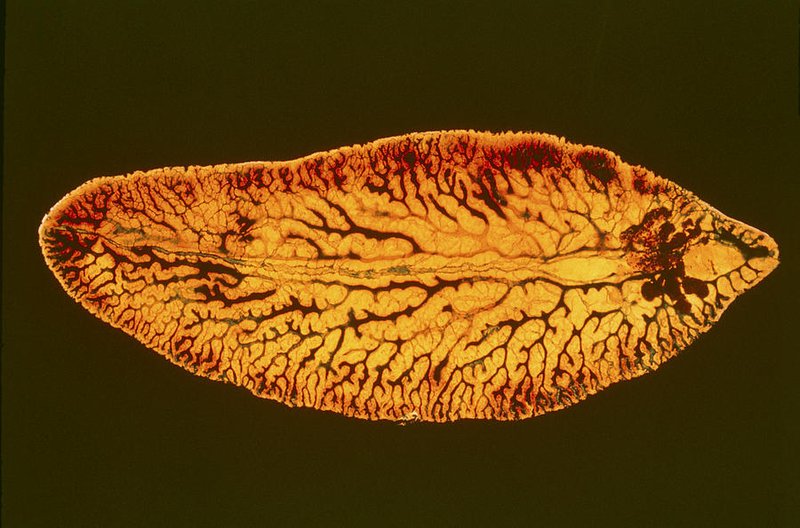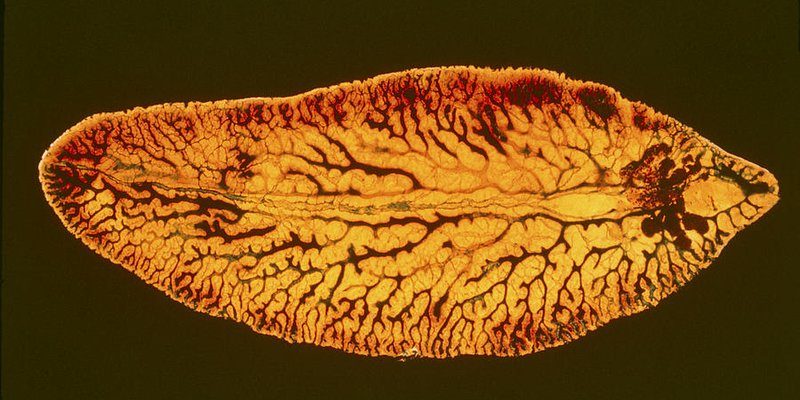
Liver flukes, which are flatworms of the family Fasciolidae, impact livestock and can lead to significant economic losses in farming. These parasites thrive in the liver of their hosts, mostly cattle and sheep. But, here’s the catch: identifying them correctly can be quite a challenge. Many people—vets, farmers, or even curious nature enthusiasts—might overlook them or confuse them with other similar-looking organisms. Let’s dive into the various challenges you might face when trying to spot a liver fluke in the field.
Understanding the Anatomy of Liver Flukes
To start spotting liver flukes, you first need to know what they look like. These worms are typically flat and leaf-shaped, with a size range of 1-3 cm. Catching a glimpse of one can be tricky because they blend into their environments. If you picture lying flat on the ground, trying to spot a green leaf among other foliage, you’ll get a sense of how challenging it can be.
What makes identification harder is that liver flukes often mimic other common parasites or even small fish. They can be especially tough to distinguish when they’re young or when found in muddy water. You might be wondering, how do you even know if it’s a liver fluke or not? That’s where a deeper understanding of their anatomy comes in handy.
Key features to look for include:
- Body Shape: Flat and leaf-like.
- Color: Usually a dull brown or gray.
- Suckers: They have two suckers, one around the mouth and one on the underside of their bodies.
Understanding these features can help narrow down your search.
Environmental Factors Affecting Identification
Environmental conditions play a huge role in spotting liver flukes. Think of it like trying to spot a bright shirt in a dark room—difficult, right? Factors such as lighting, water clarity, and the time of day can significantly affect your ability to see them. For instance, if you’re out early in the morning when dew is still on the grass or when the water is murky, it can mask the flukes’ visibility.
Also, the habitat where these flukes thrive may get crowded with other aquatic life. Sometimes, observing a busy pond can feel overwhelming with all the movements and colors. You might have to sift through numerous small organisms to find the specific characteristics of liver flukes. Keep in mind that they often inhabit areas with rich vegetation near pastures, so knowing the right locations could tilt the odds in your favor.
In addition, the seasonal changes can also influence sightings. Flooded areas during the rainy season may disrupt their patterns or wash them away, making them harder to find.
Similar Species Confusion
Another hurdle in identifying liver flukes is confusing them with similar species. In the field, there are various types of flatworms, and some can look strikingly alike. For example, the Fasciola hepatica, a common liver fluke, can be mistaken for other non-parasitic flatworms.
Honestly, you might think you’ve found a liver fluke, only to realize it’s just a harmless garden worm or another innocent inhabitant of the water. The similarities can be frustrating! To avoid this mix-up, it’s crucial to have a well-trained eye for detail. Researching various species, perhaps using field guides or mobile apps designed for wildlife identification, can make a world of difference.
A handy tip? Take photographs of what you suspect might be liver flukes and compare them later. Sometimes, a closer inspection can reveal tell-tale signs that aren’t visible at first glance.
Life Cycle Complications
Let’s take a moment to discuss the liver fluke’s life cycle—it’s where things can get a bit more complicated. These parasites have a multi-stage life cycle that includes larvae, snails, and finally, their final hosts—usually grazing animals. This cycle makes spotting them tricky because you may only see one stage in your field observations.
For example, the cercaria stage, which is the larval form that emerges from snails, can be present in water but difficult to identify without close inspection. They’re tiny and swim freely, making them easy to miss. On the other hand, their adult forms are typically found in the liver of their host. If you’re not looking for the right stage at the right time, you could go home empty-handed.
To manage this confusion, it helps to know the seasons and habitats in which each life stage is present. Typically, the adult flukes can cause noticeable symptoms in hosts, which can guide you in your search—though the signs often manifest after the flukes have been around for a while.
Gathering the Right Tools for Identification
Understanding the challenges is a good start, but having the right tools can make all the difference when spot-checking for liver flukes. You wouldn’t go on a fishing trip without a rod and tackle box, right? Similarly, when you’re heading out to identify these parasites, being prepared is key.
A good field guide on local aquatic life can offer vital information and visual aids. You might also consider taking a magnifying glass or a portable microscope if you suspect you’ve found something worth examining closely.
Here are some essential tools to pack:
- Field guide: For identification and information.
- Notebook or app: To record your findings.
- Camera: For taking photos of potential liver flukes.
- Water sampling kit: Useful for examining water samples in the lab later.
Having these tools enhances your chances of successful identification and can make the process enjoyable rather than frustrating.
Seeking Expert Guidance
If you find yourself struggling with field identification, seeking expert guidance can be invaluable. Many researchers, veterinarians, or local extension offices offer resources and support for livestock owners. Connecting with them can provide you a clearer understanding of liver flukes and support your identification efforts.
You might also consider participating in workshops or community events focused on local wildlife and aquatic life. Not only will you learn more about identifying liver flukes, but you’ll gain a network of like-minded individuals who can share tips and insights.
Remember, the more knowledge you gather, the easier it becomes to differentiate between harmless organisms and those that might pose a risk to livestock. Being part of a community can also inspire you to keep learning.
Spotting a liver fluke might feel like a complex puzzle, but understanding the challenges involved can make it more manageable. From knowing their anatomy to choosing the right tools, every detail counts. The economic impact of liver flukes on livestock is significant, and accurate identification can help in implementing timely interventions.
By being aware of environmental factors, life cycle complications, and the importance of expert guidance, you’ll feel more confident tackling the challenge of spotting liver flukes. So, the next time you set out into the field, remember you’re not just hunting for a parasite; you’re contributing to healthier livestock and a more sustainable farming practice. Happy spotting!

